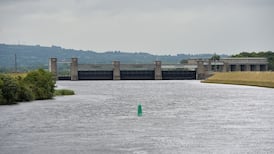The European Commission has unveiled wide-ranging proposals for rule tweaks, tax changes and subsidies to usher the continent towards the goal of carbon neutrality by 2050 in a bid to counter climate change.
The plan involves ending the era of the internal combustion engine car in favour of electric vehicles, increasing the use of renewable energy, taxing dirty fuels, capping carbon emissions, and the mass planting of forests and cultivation of natural carbon sinks.
The proposals must now be negotiated by the European Parliament and member states, which must agree in order for the proposals to be adopted.
Here is a summary of what the plan includes:
Capping carbon emissions
The package proposes to revamp and extend the EU’s 2005 emissions trading system, which caps the amount of carbon industry can produce, while allowing permits to emit greenhouse gases to be bought and sold, putting a price on pollution.
Under the plans, carbon limits would be tightened and the system would be extended to apply to road transport and buildings. Suppliers of fuel for cars and homes would be brought under the system, while consumers affected by higher costs as a knock-on effect would be compensated by subsidies funded by a tax on high-polluting imports.
The carbon limits would also be extended to cover maritime shipping, while current free allowances for aviation would be phased out.
New national targets
The plan seeks to set more ambitious national targets for emissions reductions in the areas of road transport, heating of buildings, agriculture, small industrial installations and waste management, which are currently not covered by carbon caps but produce about 60 per cent of EU emissions according to the Commission.
In turn, revenues from the carbon trading system should be used exclusively for climate and energy projects.
Electric cars
The plan aims to use tougher carbon emission standards to phase out the sale of polluting cars and incentivise the use of electric vehicles, with the ambition of making the EU an industrial leader in the sector.
Almost all vehicles should be zero-emission by 2050: new car emissions should be cut by 55 per cent by 2030.
Currently, 70 per cent of the EU’s infrastructure for electric cars is concentrated in the Netherlands, France, and Germany. The package sets out a plan to extend charging points across the continent — one million by 2025, and 3.5 million by 2030, with a charge point at least every 60 kilometres, and every 150 kilometres for hydrogen refuelling.
“Our aim is to ensure that Europeans can recharge or refuel their vehicles seamlessly everywhere, without being worried on whether there is a charging point available and whether it can be accessed,” an EU official said. The cost is estimated at €50 billion, and will be covered by both private and public investment, with funds available through Covid-19 stimulus funds and the InvestEU programme.
Forests and soils
The package seeks to reverse a trend that forests and soils are removing less and less carbon from the atmosphere each year, and sets an ambition to plant 3 billion trees. It proposes a target for climate neutrality in land use by 2035, ahead of the overall EU ambition of 2050 — with binding targets for member states. For Ireland, this will likely mean re-wetting and preservation of peatlands, the maintenance of grasslands, and increased forest cover.
Renewable energy
The EU currently sources roughly 20 per cent of its energy from renewable sources, and the package proposes to increase this to 40 per cent. It will set annual targets for adoption in different sectors while encouraging energy efficiency, such as through the renovation of homes — with a target for the public sector to renovate 3 per cent of its buildings each year.
Taxation of fuel
The Commission plans to overhaul the 2003 Energy Tax Directive, which it describes as incentivising the use of fossil fuels. It proposes changing the structure so that the dirtiest fuels are taxed most heavily. It proposes ending an exemption on fuel taxes for the aviation and maritime sectors would end, including for privately chartered corporate jets, contrary to earlier reports. The goal is for maritime shipping to use 80 per cent clean renewable fuels by 2050. The aviation industry should increasingly use sustainable fuels, hydrogen, and for smaller craft, electricity.
Levy on dirty imports
The package sets out a ‘carbon border adjustment mechanism’ — a way to tax imports that are made to less strict environmental standards than those made in the single market.
“This will ensure that European emission reductions contribute to a global emissions decline, instead of pushing carbon-intensive production outside Europe,” the Commission said in a statement.
The level will initially apply to cement, iron and steel, aluminium, fertiliser, and electricity, before being extended to other sectors. The importers most affected will be Turkey, China, Russia, and in the case of aluminium, Norway.
Part of the revenues generated would go to subsidising struggling households affected by higher prices due to increased taxes on polluting fuels.











